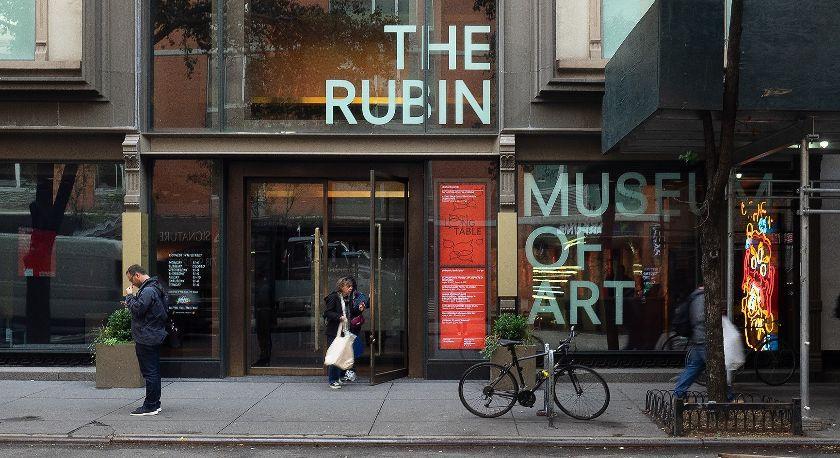
The Rubin Museum of Art in New York City has announced a new initiative, called Project Himalayan Art, that will offer resources for teaching about art from Tibet, Inner Asia, and the broader Himalayan region. Resources will include three key parts: a multi-authored and cross-disciplinary introduction to Himalayan art and cultures, a traveling exhibition, and a digital platform with free resources. Project Himalayan Art is set to launch in 2023, with exhibition dates in several US cities.
In a statement shared with BDG, the museum noted the current state of limited resources for the teaching of Himalayan art and culture. The goal of Project Himalayan Art will be to remedy this problem for future educators and students. The initiative is led by Elena Pakhoutova and Karl Debreczeny, senior curators at the Rubin Museum, together with advisory groups drawing from a number of academic disciplines.
According to Pakhoutova: “The absence of Himalayan art and cultures from most teaching curricula in the United States is a missed opportunity to engage with the meaningful contributions of these artistic traditions to global culture in the broader context of Asia. This omission also runs the risk of typecasting and cultural erasure.”
Project Himalayan Art began in 2019 and has developed over the past three years, drawing input from more than 250 educators, institutions, and other experts. The project has been awarded a four-year, US$500,000 grant from the Henry Luce Foundation to fund the traveling exhibition and online resources.
A forthcoming publication, Himalayan Art in 108 Objects, will endeavor to place each object in a rich historical context. To do this, experts will detail the religious, literary, and material culture that contributed to the creation of each item. The work will span from the Neolithic period to the present day, and will include paintings, drawings, maps, architecture, sculpture, and ritual objects, as well as common everyday items. The work will show the transfer of cultures through the Himalayas, which have been both a well-spring for rich cultures of their own and an important crossroads for travel, exchange, and pilgrimage from throughout Central, East, and South Asia.
“In short, the goal for Project Himalayan Art is to emphasize cultural connectivity and exchange and demonstrate that these connected traditions extend well beyond the Himalayan mountain range—and even the Tibetan Plateau—playing a significant role in Asia,” said Karl Debreczeny, senior curator at the Rubin Museum. The goal of the digital platform is to offer an accessible resource for educators and academics, as well as the public. On the website, materials will be arranged to allow people to explore Himalayan art and culture at their own pace. Content will include general overviews, in-depth essays, videos, animations, maps, audio clips, along with curriculum guides for educators.
Rubin Museum executive director Jorrit Britschgi noted: “Project Himalayan Art is the Rubin Museum’s most ambitious contribution to and investment in the field of Himalayan art and cultures yet. It will be a major resource for the next generation of students, educators, artists, and interested public for decades to come.” He continued: “Project Himalayan Art is also a seminal part for our growing focus on global initiatives—such as the inaugural Nepal Pavilion in Venice, our partnership with Itum Bahal in Kathmandu, Nepal, and the first presentation of the new traveling Mandala Lab in Bilbao, Spain—that deepen the understanding and appreciation of Himalayan art, ideas, and cultures worldwide with well-researched, accessible, and transformative content accessible to audiences beyond the museum.”
See more
Project Himalayan Art (Rubin Museum)
Related news reports from BDG
New York’s Rubin Museum Offers an Immersion into Buddhist Wisdom and Practice
New York’s Columbia University Offers Exhibition of Buddhist Objects in Context
Dr. Christian Luczanits to Present Talk on 11 Nov.: “Mudra and the Vajradhatu Mandala of Tabo Assembly Hall.”
Khyentse Foundation Announces Two New Buddhist Education Initiatives
Related features from BDG
Nabji, Part Two: Stone Age Mysteries
Three Aspects of Buddhist Dance
An Interview with Alexander Gardner on the Treasury of Lives and the Life of Jamgon Kongtrul the Great
On Bells, Whistles, Hats, and Number Sets: An Interview with Jeff Watt on Buddhist Iconography and Himalayan Art
Zhiguan Museum of Fine Art: Strengthening the International Community of Himalayan Art
Pioneering Himalayan Buddhism in the US: The Jacques Marchais Museum of Tibetan Art














